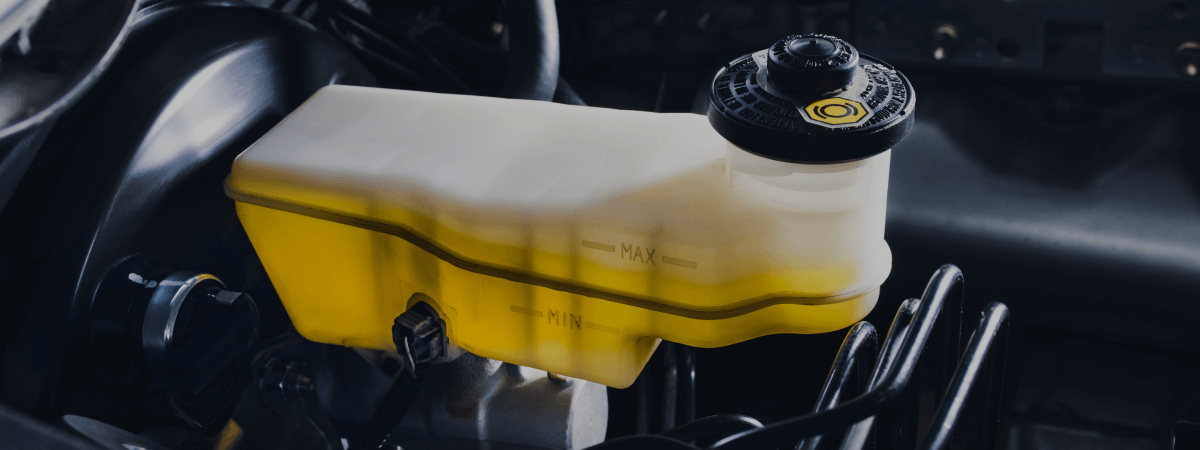
The last thing you want for yourself or your family members is to be stuck on the side of the road somewhere with unexpected car trouble. Be sure all the drivers in your family are aware of the signs of a failing transmission so they can avoid this particular inconvenience.
First of all, depending on whether you drive a manual or an automatic, the signs of a failing transmission may vary. We’re not just your go-to for Utah oil changes; we service engines of any make or model. We’ll take you through the differences between a manual vs automatic transmission.
Manual vs Automatic Transmission
A manual transmission, sometimes referred to as a stick shift, is one in which the driver is responsible for all shifting – i.e. park to drive, downshifting, reverse, etc. An automatic transmission does some of the work for the driver. While you’re still putting the car in park, drive and reverse yourself, the car shifts on its own.
Signs of a Failing Manual Transmission
While manual transmissions aren’t as popular as they once were, they are still a great choice for many drivers. As you get familiar with your car, you may notice some of the following as signs that there is something wrong with your transmission.
- Grinding gears – when you push in the clutch and move the stick shift of a manual transmission, you can actually feel the gears grinding. The clutch may not release smoothly under your foot, and/or you may hear the grinding when you attempt to position the stick shift in the desired gear. This is not a good thing!
- Changes to the clutch – If you notice a difference in the positioning of the clutch pedal when you go to change gears, that could be an early warning sign that your transmission needs attention. It might catch higher or lower than usual, so you’ll want to get the transmission checked for hydraulic leaks, worn discs or worn pressure plate.
Signs of a Failing Automatic Transmission
Due to the ease of use, automatic transmissions are popular these days. So, how do you know if your transmission is failing in an automatic?
- Trouble engaging gears – If you find your car is not moving once you shift into drive, you might have a problem with your transmission. Whether it’s a fluid leak or a component of the shifting mechanism, there’s something not allowing the car to properly find the correct gear. Additionally, If something isn’t functioning properly in newer cars, the computer could be your problem, too. When there’s a malfunction, the computer system can’t send the proper signal to the car to get moving.
- Slipping gears – If you feel the car having trouble getting into or staying in gear, you may need to top off your transmission fluid or check for contamination. Ignoring slipping gears can lead to other engine problems, such as overheating.
- High revving/idle – When you’re in park, how’s the idle of your car? If that RPM dial is creeping up and you find it’s revving higher than normal, that’s a sign of trouble with the transmission. Parts of the clutch could be wearing down, or you might be low on fluid.
- Leaking fluid – Obviously, any fluids leaking from the car aren’t a good sign. If you see reddish fluid under your vehicle, it’s from the transmission. There could be a leak in a line, a faulty gasket or a bad seal. Loss of fluid can lead to some of the problems we’ve already mentioned, and it’s also dangerous for your car to have transmission fluid leaking on other parts of the engine.
- Burning smell – When your car has that dreaded burning smell on the engine, you have a fluid leak. Another sign that your fluids are low is a burning smell coming from the clutch.
- Buzzing, clicking or humming sounds – There are a number of reasons you could have strange new sounds coming from your car. If you hear buzzing, clicking, humming or roaring, there could be a problem with the transmission. These issues could indicate a bad bearing, damage to gears or perhaps a bad seal.
- Loss of power – If your car battery is in good shape, but you don’t have power to your vehicle, it could be due to the transmission. Again, newer cars with computers may be cutting the power to help protect your engine. So, don’t force the issue until you have the car looked at.
- Check engine light is on – If you’ve owned a car for any number of years, then you probably know the “CHECK ENGINE” light can come on for a variety of reasons. And, you guessed it! A failing transmission can engage this dashboard light. Take your car into an auto repair shop to have the codes read to pinpoint the problem.
Preventing Transmission Problems
Just like a regular oil change or alignment service, having your engine and brakes checked for signs of trouble is a good practice for any car owner. During routine services such as an oil change, we can get under the hood and catch leaks before they create a bigger problem.
Related Posts
Key Takeaways On average, passenger vehicle tires last 40,000 to 60,000 miles, depending on type, driving habits, and maintenance. Replace tires when tread depth reaches 2/32”, if damaged, or older than 10 years. Regular rotation, alignment, and proper inflation extend tire life. Aggressive driving, poor roads, and harsh weather shorten tire lifespan. Take advantage [...]
When you think about car maintenance, you probably focus on oil changes, tire rotations, and maybe even brake pad replacement. But what about your brake fluid? If you’ve ever wondered, “What does brake fluid do?” or “Why is brake fluid important?”, you’re not alone. Brake fluid might not be the most talked-about part of [...]
Is that high-pitched squeal from your brakes driving you—and everyone else—crazy? Don’t ignore it. Squeaky brakes aren’t just annoying, they’re your car’s way of saying something needs attention. Whether you're cruising through Salt Lake City or winding up Idaho’s mountain passes, here’s what’s likely going on, how you can fix it, and when it [...]





